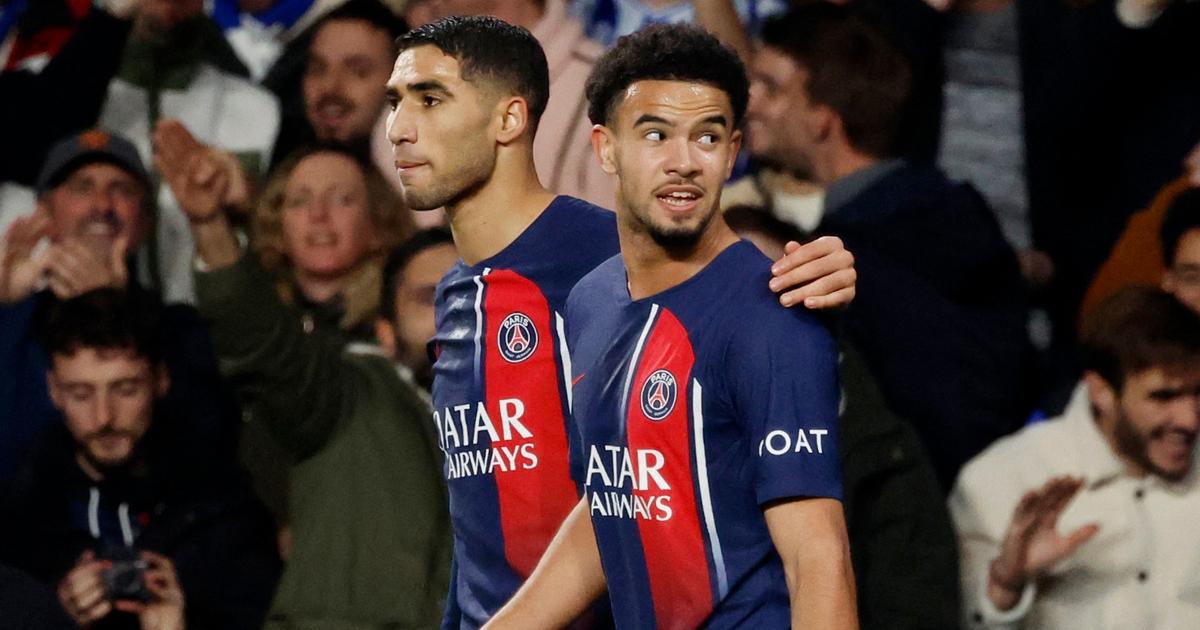Icon: enlarge
Bayer attacker Alario (center): With a header to success
Photo:
Torsten Silz / dpa
The 4th Bundesliga matchday came out almost entirely without excitement or outsider successes.
And yet something amazing happened: the home advantage was gone.
First realization: The home advantage is (still) gone
The German Bundesliga has existed for 57 years, with 1938 match days being played.
On just eight (!) Of these match days, not a single Bundesliga club was able to win in their own stadium - just like this weekend.
The away team won five times and games ended in a draw four times.
Since the beginning of the corona crisis, the proportion of home wins in the Bundesliga has decreased by around 15 percent.
In hardly any league in the world has the number of home wins since the beginning of the Corona crisis fallen as sharply as in the German one.
The reasons for this may be varied, for example referees are apparently less influenced when the fans are absent.
Seven of the nine games over the weekend took place without spectators or in front of fewer than 500 fans.
Only in Sinsheim and Berlin were several thousand spectators as guests.
And due to the rising corona numbers, more and more games will be played in front of an empty backdrop in the coming weeks.
How important a (somewhat) noisy backdrop can be, was shown on the second day of the game.
Augsburg's players said after their 1-0 home win against BVB how much the audience had pushed them forward.
The Hoffenheim team had a similar experience in their 4-1 victory over triple winner Bayern Munich.
Without an audience, the Bundesliga faces a similar scenario as in spring: Back then, the favorites from Munich and Dortmund won almost all of their ghost games.
Outsiders seem to have a harder time when they don't get support from the audience during their 90-minute ball hunt, as Bielefeld's 4-1 defeat against Bayern on Saturday showed.
A home advantage is hardly noticeable in the league at the moment.
Second insight: the Bundesliga’s new secret recipe?
Cross, header, goal!
Success with brains: This is the latest trend among Bundesliga teams.
In this way, Lucas Alario scored the only goal of his Leverkusen against Mainz.
VfB Stuttgart helped a header goal from defender Marc-Oliver Kempf in Berlin.
Both hits in the 1-1 draw between Union Berlin and Schalke fell after headers.
For Leipzig even the 1.70 meter tall Angelino headed a goal.
The proportion of goals scored with heads in this young season is significantly higher than in the previous season: while around 17 percent of goals were scored with heads at the time, the figure is now 27 percent.
Why is that?
More and more teams are discovering standards for themselves.
SC Freiburg has scored three of its five goals this season after dormant balls, Union Berlin also scored three times in this way.
These teams were already known for their corners and free kicks last season.
But Leverkusen, RB Leipzig and the Bremen team, who were so weak in the previous season, worked hard on it.
The shortened summer break and the dense timing of the schedule should also have an effect on these statistics.
Only a few teams have used the summer break to work out detailed plans for how they would like to outplay an opponent while in possession.
Teams like Bremen or Leverkusen are increasingly relying on high crosses.
This is accompanied by a return of the target player: Werder relies on Niclas Füllkrug, Leverkusen on Alario or Patrik Schick, 1. FC Cologne on Sebastian Andersson and VfL Wolfsburg on Wout Weghorst.
The striker with a strong header is back in fashion in the Bundesliga.
The triple winner proves that you can score goals without a head.
FC Bayern has scored the most goals so far (17) - and has not yet scored a single head.
Third insight: data and Bundesliga broadcasts: well meant, badly done
Marco Reus' winning goal against Hoffenheim should not have been too difficult.
After excellent preparatory work by Erling Haland, he only had to push the ball into the empty goal.
All the more astonishing was the graphic that was displayed on Sky: "Reus goal probability 26%".
This season, the Bundesliga is trying to use data and visualizations to bring the audience closer to what is happening on the pitch.
For example, after goals, it is shown how likely it was that the striker will score.
The so-called "Expected Goals" value measures this probability using historical data.
There are various data models, most of which reveal how they work.
The graphic used in this case is different: the exact values that are included in the calculation are not explained transparently to the viewer.
In the case of Reus' hit, the value is in any case incomprehensible.
Who seriously believes that Germany's two-time footballer of the year misses the empty goal in 74 out of 100 attempts?
There are also problems with the formation graphics, which the Bundesliga directors fade in after 15 minutes of playing time.
They should help the viewer to decipher the tactical formation of the teams - however, they cover the screen to a large extent.
Data and visualizations would actually do the reporting good.
The Bundesliga teams have long been using them to quantify their performance on the field.
In this way, trainers and scouts can objectively check their gut feeling.
But in the crude form in which these visualizations are used in the television broadcasts, they are of no help.
It may be well-intentioned to incorporate modern data into reporting.
But it's not well done.
Icon: The mirror









